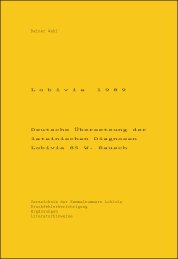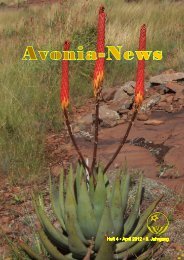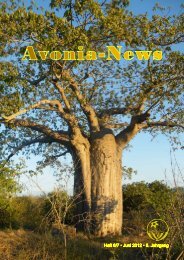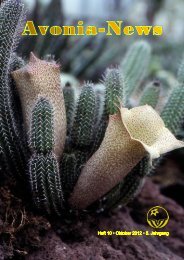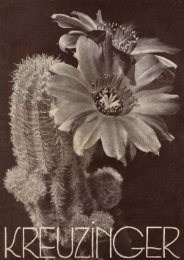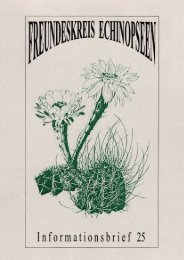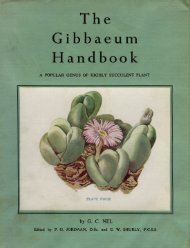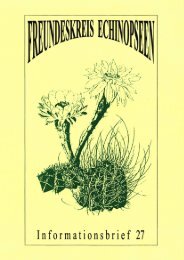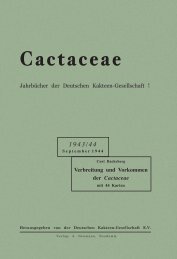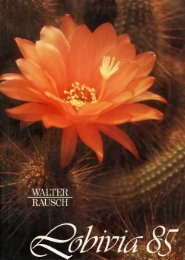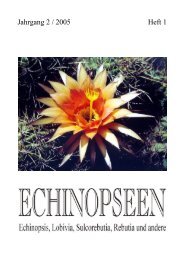journal
journal
journal
You also want an ePaper? Increase the reach of your titles
YUMPU automatically turns print PDFs into web optimized ePapers that Google loves.
April, 1951 JOURNAL OF GREAT BRITAIN 31<br />
In good country, therefore, one gets a good deal of exercise in the course of a day. Every time a promising<br />
kopje or patch of quartz pebbles is spotted, the car is stopped and off we go with pick and paper bag. Our object<br />
may be close to the road or two miles away. If far off, we simply turn the car into the veld to drive as close as<br />
possible. Not every likely spot lives up to its promise. If one's luck is out, the haul by the end of a strenuous<br />
day may be very small indeed, or one may come across the same species at one locality after the other for many<br />
miles. I remember one day. We searched dozens of quartz patches and, after a time, every search ended with an<br />
exclamation " Oh ! these wretched microspermum." We were finding nothing but the comparatively rare<br />
Dirtteranthus microspermum in hundreds and, of course, we wanted no more than a small number of each species.<br />
(By small number I mean, in the case of Lithops, say fifty or sixty specimens !)<br />
Remember that, in the middle of the day, it is quite hot. Remember, too, that searching for Lithops means<br />
walking with a bent back. You will then realise that towards five o'clock one is pretty tired. It is time to select<br />
a camping site. If possible, camp is pitched near some trees where dry wood can be gathered for the camp fire.<br />
This is always a task for both of us and I think you would have enjoyed the sight of my wife marching back to camp<br />
with a load of firewood in her arms !<br />
After such a day in the open, with plenty of exercise and only a light lunch, you can imagine what our appetite<br />
is like. The meat consumed each evening, preferably lamb chops roasted over the coals, would equal, I am afraid,<br />
more than a month's English ration.<br />
Usually we are in bed not long after eight o'clock. Those last few minutes at the end of a perfect day, pleasantly<br />
tired, but with a feeling of utter contentment, alone in the silent veld, with perhaps the distant cry of a jackal now<br />
and then, warm and comfortable inside one's sleeping bag, with the clear sky high above studded with myriads<br />
of bright stars—that indeed is bliss !<br />
In conclusion I must say only a few words about our collection.<br />
Cape Town, with its wet winter, with its air in summer so much more humid than the very dry air of the<br />
interior, is anything but ideal for succulents. Some genera cannot be grown in the open at all, therefore, along<br />
with Dinteranthus and a few others, our Lithops were kept in pots under celoglass, with the sides of the house open.<br />
The rest we planted in the open. One part of the garden was reserved for indigenous wild flowers and shrubs<br />
and was studded with a number of rockeries. I built these myself, in fact, the gardener was not allowed to share<br />
in the succulent cultivation at all ! Self propagating wild annuals provided the necessary shade in the rockeries<br />
in summer. Each rockery had a name. One was called Mount Finger, because, in building it, I had a finger crushed<br />
under a rock.<br />
I could never answer the frequent query as to how many genera and species there were in the garden. I do<br />
know that at one time we had one hundred and fifty species of Stapeliae, some of them huge clumps. During the<br />
flowering season it was a great game to look for fresh flowers. This was the more exciting since, as you know,<br />
Stapeliae can only be identified by their flowers. One, therefore, never knew what species one had brought back<br />
from an expedition until they flowered. I must add, that, on a hot afternoon, with no breeze and with numbers<br />
of open Stapeliae blooms, work in a rockery was not exactly a nasal delight.<br />
Our special pride and our greatest joy, however, were the Lithops, some raised from seed, some received from<br />
other collectors, but most collected by ourselves. When we left, there were something like fourteen hundred<br />
specimens. Except for a small number given to the Kirstenbosch Botanic Gardens, this collection was presented<br />
to the University of Stellenbosch.<br />
And now my wife and I are looking forward to the day when we shall be able to resume those wonderful<br />
Lithops hunting expeditions and to build up a new collection, this time, I hope, on our farm.<br />
At the conclusion of the lecture, Dr. Geyer invited and dealt with numerous questions, all of them of value,<br />
but space prevents an account of them. The meeting was a packed one. The visit of Dr. Geyer was an extremely<br />
pleasant experience. There was nothing of the High Commissioner about the genial Doctor, whose face was warm<br />
with smiles throughout the evening and, as he said in one of his asides during the lecture, he felt pleasure that for<br />
once he could drop the official and become one of a number whose interest clustered around a common, interesting<br />
object, in this case, of course, Lithops. It was indeed a great privilege to have Dr. Geyer with us and to hear at<br />
first hand of experiences with our plants in their native habitats. Captain H. J. Dunne Cooke introduced Dr. Geyer<br />
and moved a vote of thanks at the conclusion of the lecture, a vote that was unanimously applauded.<br />
Finally, Mr. A. J. Edwards, our Chairman, asked Dr. Geyer to accept, on behalf of the Council and members of<br />
the Society, a Vice-Presidency and Mrs. Geyer an honorary membership. Dr. Geyer, on behalf of his wife and<br />
himself, thanked Mr. Edwards and stated that they would consider it a great honour to accept.



